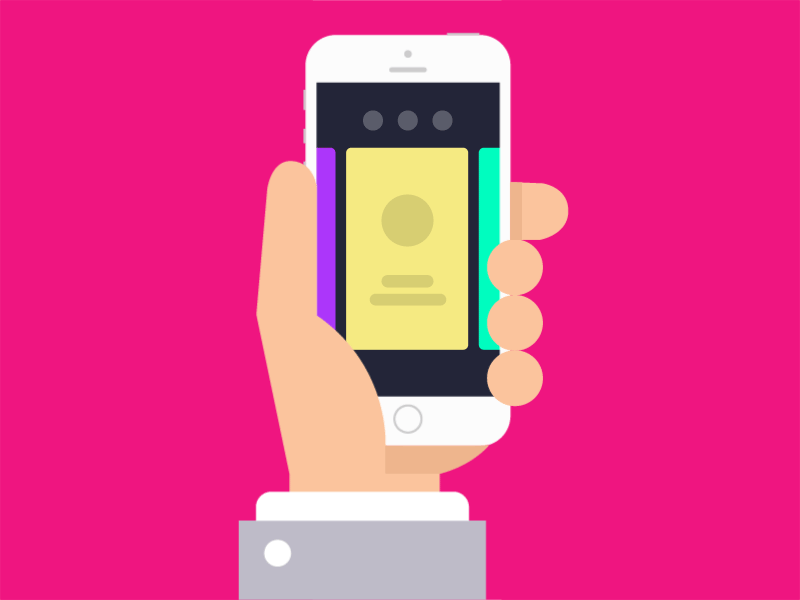
Nowadays, people are spending more time on their smartphones and mobile devices. If you are a startup or an established business, creating a great mobile app is a method to increase your visibility and put you in front of the competition. You can hire dedicated developer or one of the top app development companies to help you build your desired application depend on your project scale.
Whatever you choose, it can be extremely profitable if you know what you’re doing, so make sure of what you intend to accomplish within the app, whether you want to ride the wave of other competitors or to resolve a problem, and how it will drive your business.
So, here’s a use case from Hicham Moutahir that you can keep in mind when you want to develop mobile apps for your business.
1. Discovery Stage — Laying Down the Foundation of Your Mobile App
This stage is a term for pre-development research. It meant to define the goals, the problem(s), and the expectations of the end-users. The step on this stage consist of:
- Competition is a good way to kick off your project and position yourself to outperform the other apps in your chosen category, for examples, number of installs, company history, star rating, and reviews.
- Ideation is the time to confront your potential idea’s validity and viability to be profitable in the long run. It would come from a problem that you or people around you faced or a problem that you want to address.
- Knowing your target market/audience by conducting a proper market research, Age, gender, location, hobbies, or actual phone brand your target demographic uses are a few useful metrics to define a specific target that you will cater to.
- Monetizing your app. In-app purchases, sponsorships, ad revenue, crowdfunding, freemium model, and traditional paid ads are a few ways you can explore to monetize your app.
- Defining MVP. MVP is a testable product that is feature incomplete. It helps you collect data and user feedback at an early stage. Based on this feedback, you will be making incremental improvements to the subsequent iterations.
2. UX Design — Designing User Experience for Your App
UX design is an ongoing process that provide meaningful and relevant experiences to users. That is about enhancing customers’ satisfaction level by offering optimal app usability and a smooth experience. Information Architecture (to maximize accessibility and ease of use), Wireframing your Apps (to show the skeletal framework of an app, explain a concept, and set reasonable expectations), and Clickable prototype (to identify obvious surface flaws) are included in the UX Design process.
3. UI Design — Crafting the Aesthetic & Functionally of Your App
UI defines how of your app looks and behaves visually (ex: animations). These are the process of UI Design:
- Create Rendered Design
- Develop a Rendered Click-Through Design
- Keep it Aesthetically Pleasing
- Follow and Use the Latest UI Trends
- Conduct Beta Testing
4. Design to Development Handoff
It requires constant communication between designers and developers from the early stage of the project. Follow these steps below to ensure a smooth collaboration between designers and developers.
- Design Files to Stay Organized
- Share Key User Goals
- Share Prototype with Developer
- Share Design Specs (Opacity, Colors, Fonts, Height & Width, Alignment, and Spacing)
- Final Words, paramount to delivering a quality product
5. High Level Technical Design — Deciding Technical Aspects for Your App
It refers to the stage where you decide on a programming language, development approach, and suitable technologies for your mobile app.
Front End, There are three approaches that often used to develop the front-end of an app, namely Platform-Specific Native App, Cross-Platform Native App, and Hybrid App.
Back End, You could consider the following factors before writing the code, which are: Choosing a Programming Language (C#, Java, Python, .NET, PHP, etc.), Database and Data Structures (MySQL, MongoDB, PostgreSQL, etc.), and Hosting.
6. Mobile App Development — Step by Step Approach
The best approach used for mobile app development is in sprint or agile methodology in which all development efforts are divided into smaller subtasks and milestones. The development process iterates through a series of stages including planning, development, testing (functional, performance, edge-case, device-specific, UT & UAT), and review.
7. Deployment
Application deployment best practices includes release cycles, continuous deployment, developer certifications, automation, hosting environments, app features, web API (server), and apple/google app store. Still, you need to continually build new enhancements and fix issues to ensure the success of your app.
8. Mobile App Monitoring
These are the things that you need to monitor after the deployment process, which are start and resume time, crashes, UI response time, analytics, technical performances, app store management, battery and cellular data consumption.
9. Further Mobile App Improvements
Upgrading your app with new insight to enhance its visibility and increase app downloads. The update goals is to meet the evolving user expectations as well as ever-changing guidelines of various platforms. The improvements itself is based on the user feedback. User insight and competitor research can help in adding new features and keep it fresh and up-to-date.
In conclusion, it is easy to build an app, but it takes effort to build one that users like. Ensure that you hire a top app development company to get a wonderful product.
Expanding Your Mobile app with Sagara Technology.

